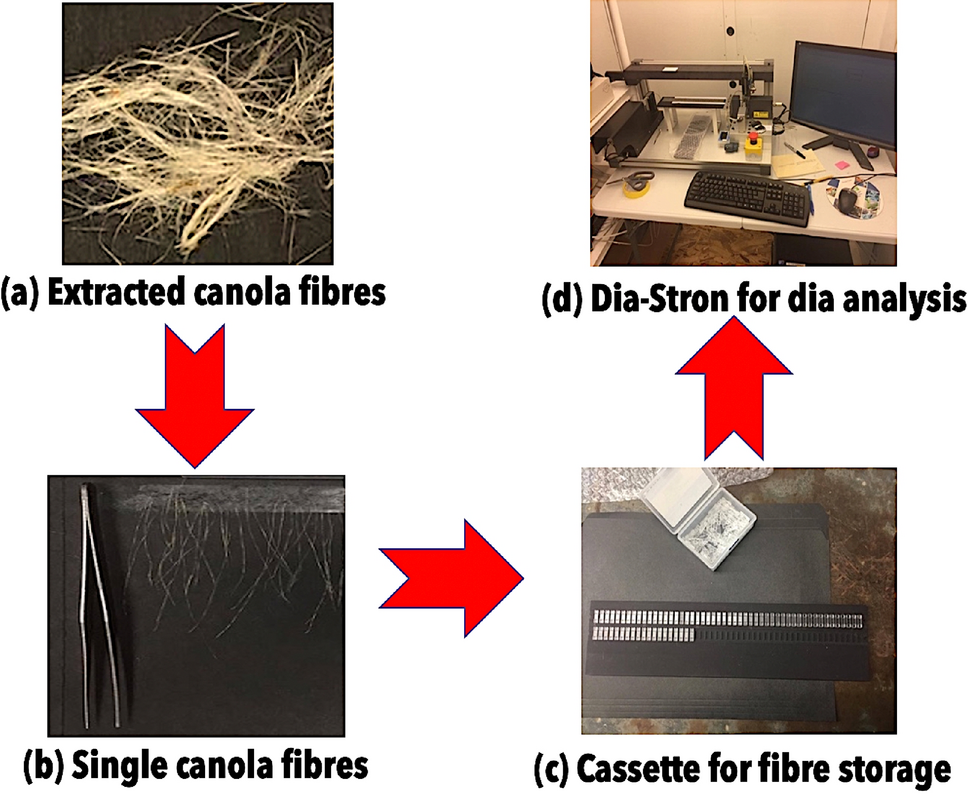Increasing Manufacturing Productivity with an Optical Fibre Diameter Analyser
Increasing Manufacturing Productivity with an Optical Fibre Diameter Analyser
Blog Article
Optimize Your Fibre Optic Efficiency: Comprehending Optical Fiber Diameter Analyser Innovation
The performance of fibre optic systems is critically influenced by the precision of their size, a variable often forgot in the pursuit of optimum signal honesty. Comprehending the modern technology behind optical fiber diameter analysers exposes the detailed equilibrium in between measurement accuracy and manufacturing quality. These tools not just boost conformity with market standards but additionally give real-time insights that can preemptively address potential concerns. However, the effects of their use extend beyond mere dimension; they can essentially alter the landscape of fiber optic efficiency. What elements should one think about to harness their complete potential?
Significance of Optical Fibre Size
The size of optical fibre plays a crucial duty in determining the efficiency and efficiency of interaction systems. Conversely, smaller diameters have a tendency to sustain fewer modes, which can improve signal clarity and lower crosstalk.

In addition, comprehending the size's effects can lead to cost savings by reducing the requirement for signal boosting and repeaters in substantial networks (optical fibre diameter analyser). Finally, the value of optical fibre size can not be overemphasized, as it straight affects the overall efficiency and dependability of modern-day interaction systems

How Size Influences Signal Quality
Signal high quality in optical fiber systems pivots dramatically on the diameter of the fiber. A smaller size can lead to greater attenuation rates, resulting in signal loss as light travels via the fibre.
Conversely, larger sizes normally enable for enhanced light capture and lowered modal dispersion, boosting signal quality. In multimode fibres, a larger core diameter can sustain several light settings, but it may also introduce intermodal diffusion, which can degrade signal top quality. Picking the optimum fiber diameter is critical for accomplishing the wanted performance in particular applications.
In addition, the interaction between the fiber diameter and the wavelength of the light made use of plays a crucial function in figuring out the efficient transmission distance and total signal integrity. Understanding exactly how fibre diameter influences signal high quality is vital for network designers and engineers making every effort to enhance optical fiber systems for reliable, high-speed information transmission.
Review of Size Analyser Technology
In lots of optical fibre production procedures, precise dimension of fiber size is essential for making certain constant efficiency and top quality (optical fibre diameter analyser). Diameter analysers are sophisticated tools created to evaluate the physical measurements of optical fibers with high accuracy. They utilize innovative optical and laser technologies to determine the size, ovality, and concentricity of the fiber, hence offering critical data for quality assurance
These analysers can run in-line during the manufacturing procedure or as part of off-line screening methods. In-line systems enable real-time surveillance, enabling suppliers to change criteria immediately, consequently maintaining optimum manufacturing conditions. Off-line analysers, on the other hand, offer detailed evaluations of batches, guaranteeing that any type of inconsistencies from view website defined resistances are recognized and attended to.
Size analysers substantially add to the decrease of flaws in optical fibres, improving total product reliability. By constantly determining essential specifications, these innovations assist in compliance with industry criteria and requirements. As the need for high-performance optical fibres proceeds to increase, the role of size analysers comes to be significantly crucial in accomplishing the preferred high quality and efficiency requirements in fiber optic systems.
Key Features of Fiber Size Analysers
Although different designs of fibre size analysers exist, they frequently share a number of essential features that boost their capability and dependability. One of one of the most considerable features is high-resolution dimension capacities, which ensure exact diameter analyses, essential for preserving quality assurance in fibre production. Additionally, several analysers integrate innovative optical sensing units developed to discover minute variants in fibre size, thus supplying very useful data for process optimization.
Another vital attribute is real-time surveillance, enabling operators to get instant feedback on fibre diameter throughout the production process (optical fibre diameter analyser). This capacity helps with quick modifications and reduces the possibility of problems. Many analysers also come furnished with user-friendly interfaces, making it possible for operators to quickly browse through data and settings outcomes
In addition, durable information storage and evaluation functionalities are important for tracking historical efficiency fads and making certain conformity with market criteria. These functions collectively Get More Info contribute to the effectiveness of fiber size analysers in optimizing fiber optic performance.
Ideal Practices for Fiber Optimization

First, regular calibration of optical fibre diameter analysers is vital. This ensures accurate dimensions and decreases possible inconsistencies that can influence performance. Next off, preserving a clean workplace is essential; dirt and impurities can cause indicate degradation.
Additionally, it is essential to choose fibers that fulfill certain application requirements. This entails assessing factors such as attenuation, data transfer, and environmental problems. Appropriate installation methods need to article additionally be complied with, including staying clear of sharp bends and excessive stress, which can compromise fibre honesty.
Moreover, employing innovative monitoring systems can promote real-time performance evaluations, enabling punctual identification of problems. Normal testing and maintenance need to be carried out to make sure that fibers continue to be within optimal operational criteria.
Finally, training personnel on the most recent fiber optimization modern technologies and techniques will boost their capacity to execute efficient strategies. By complying with these best practices, organizations can substantially boost the performance and life expectancy of their optical fiber systems, ensuring efficient communication and data transfer.
Conclusion
In verdict, the assimilation of optical fibre diameter analyser technology is critical for making the most of fiber optic performance. By making certain accurate measurements of fiber dimensions, these analysers substantially improve signal high quality and decrease losses throughout information transmission.
Signal high quality in optical fiber systems pivots considerably on the size of the fiber.In many optical fiber manufacturing procedures, exact measurement of fiber diameter is essential for making certain constant efficiency and top quality. As the demand for high-performance optical fibers continues to increase, the role of size analysers comes to be increasingly crucial in attaining the preferred quality and performance criteria in fibre optic systems.
These attributes jointly add to the efficiency of fiber diameter analysers in enhancing fibre optic performance.
In final thought, the integration of optical fibre size analyser modern technology is vital for taking full advantage of fiber optic efficiency.
Report this page